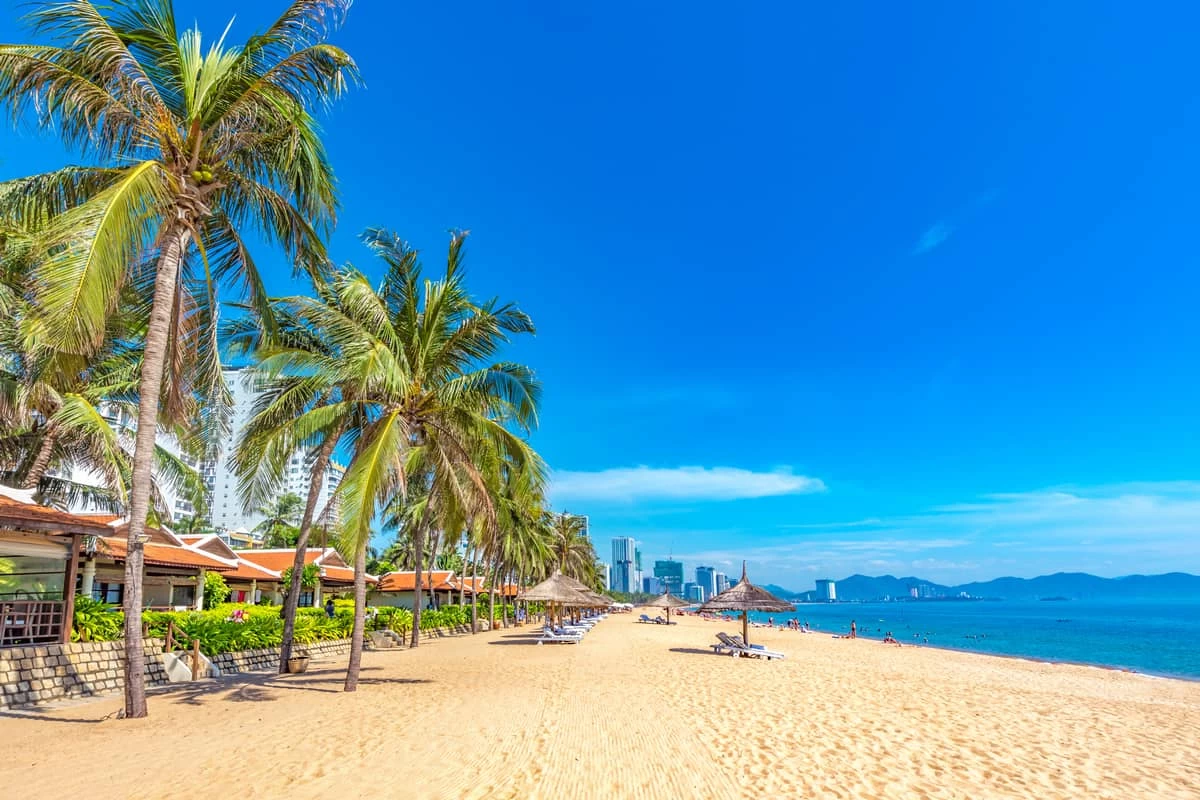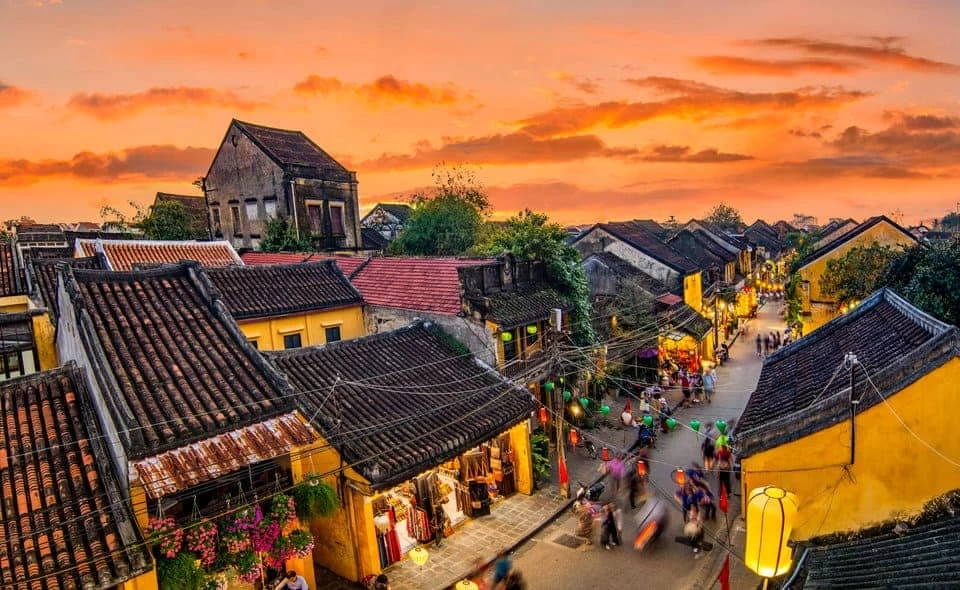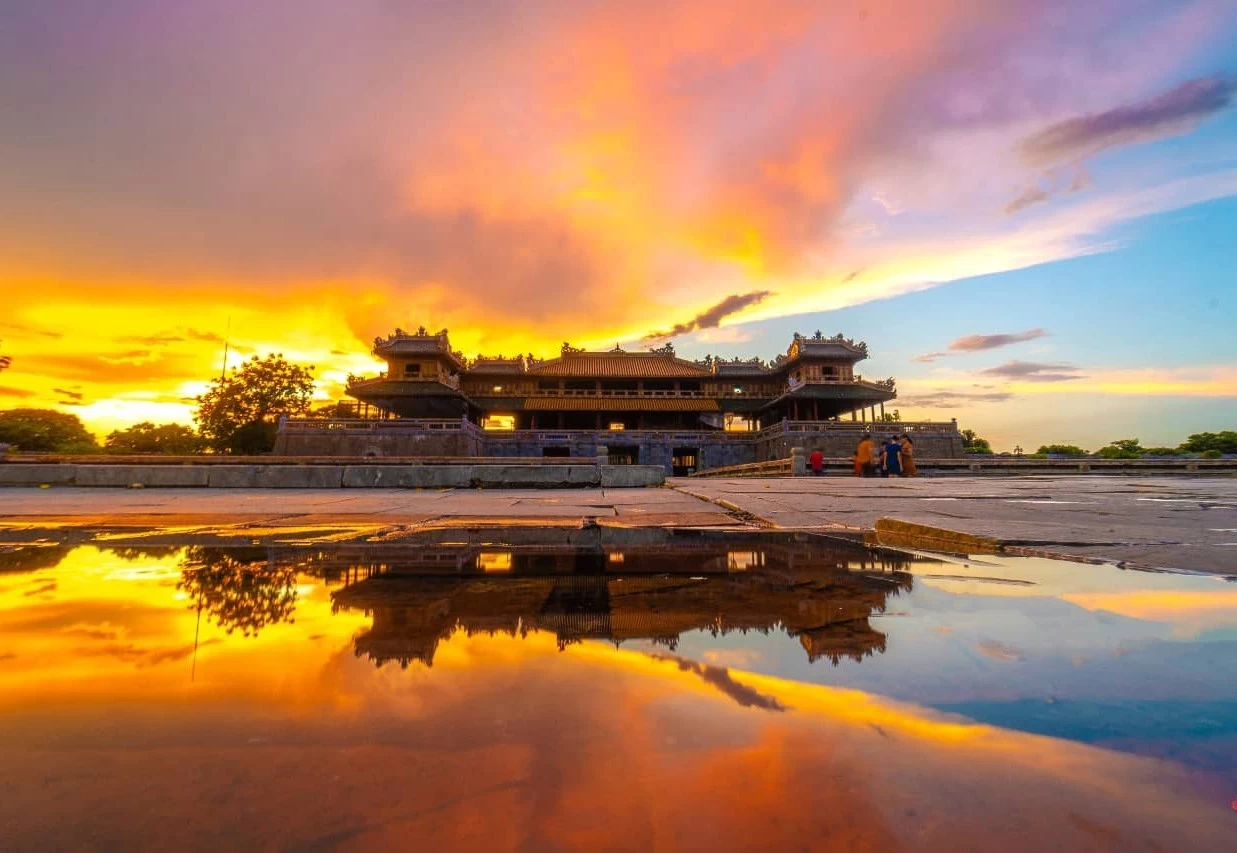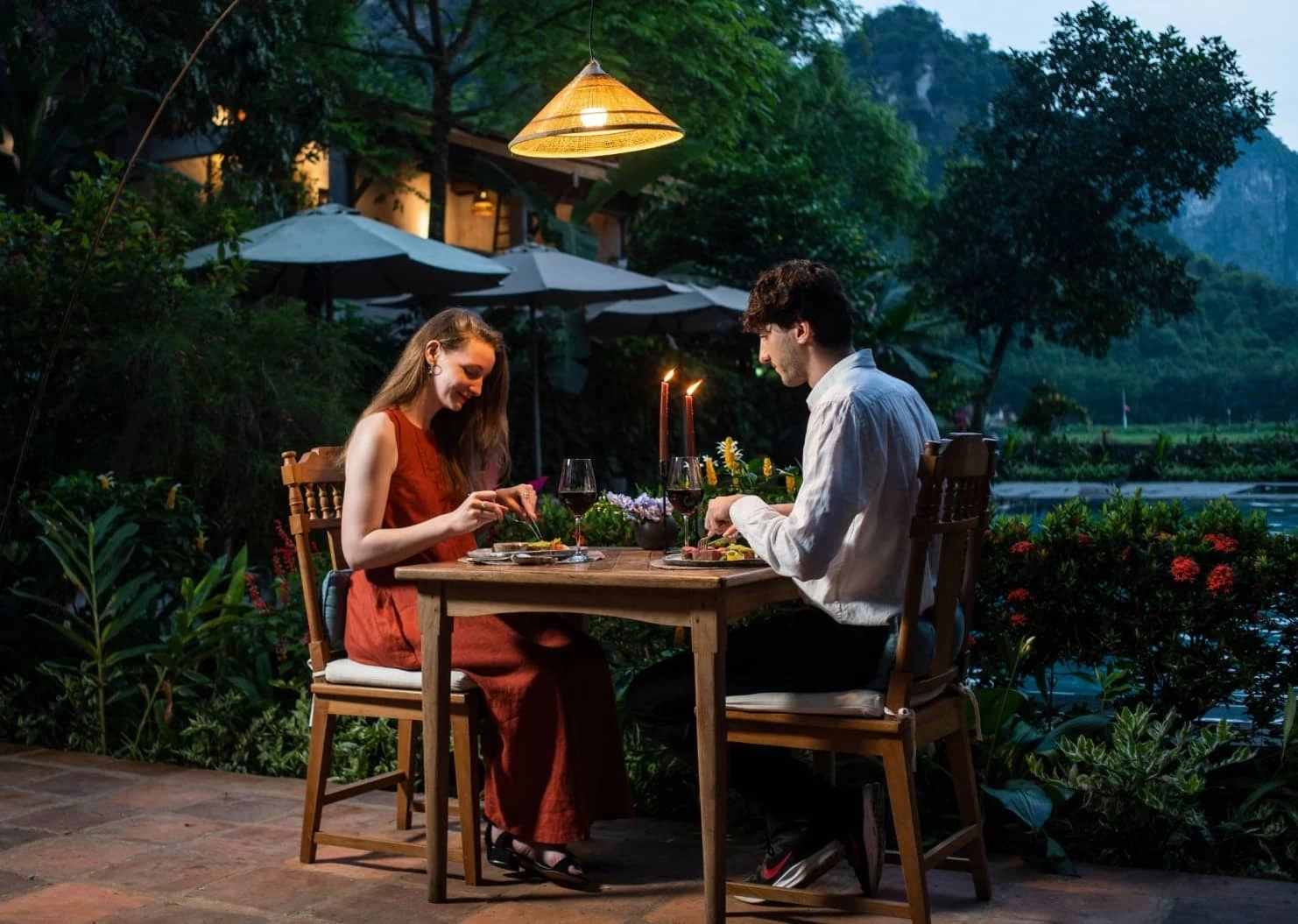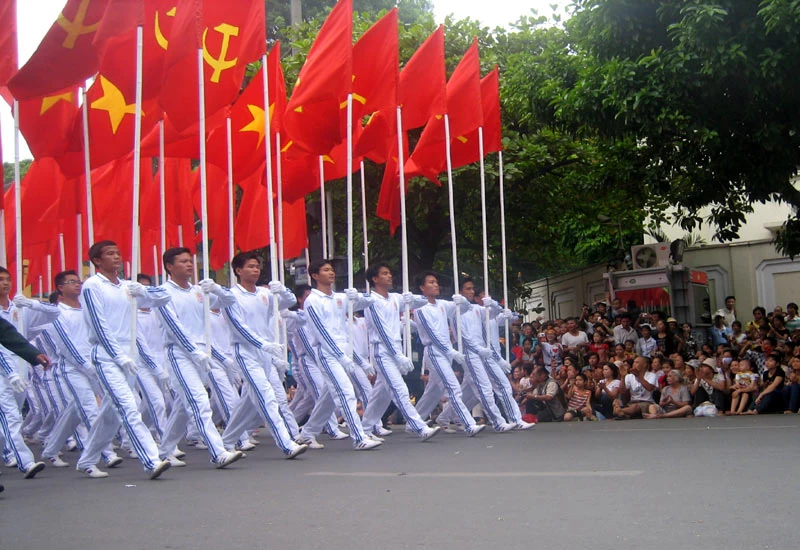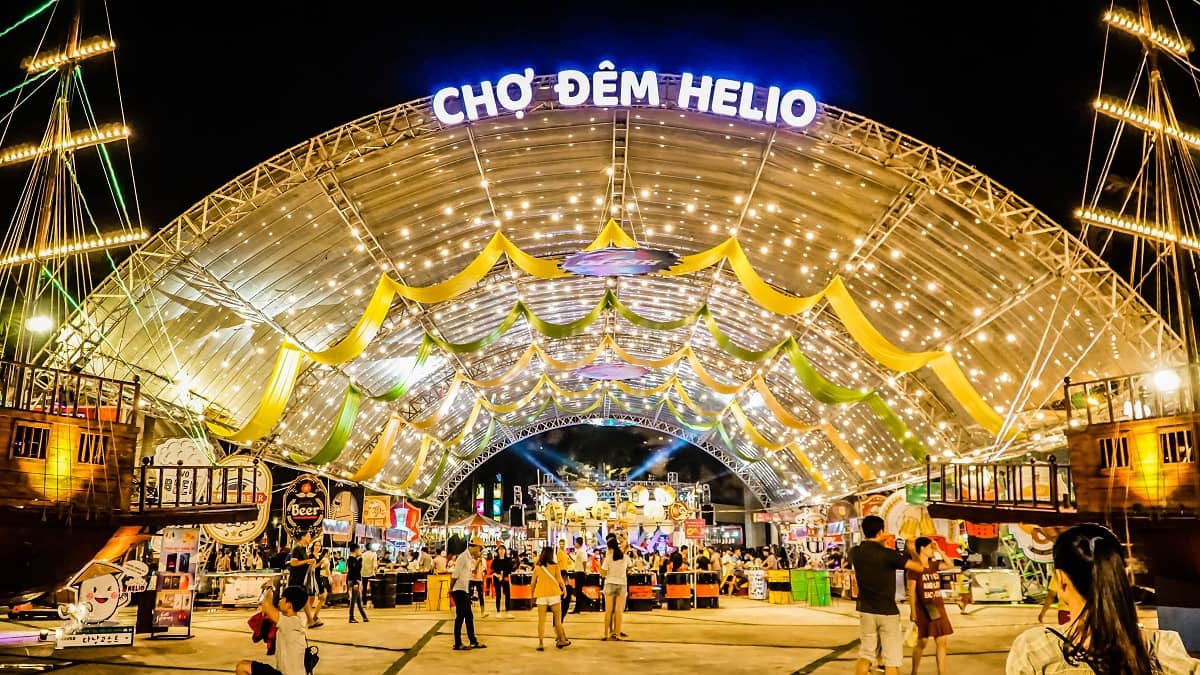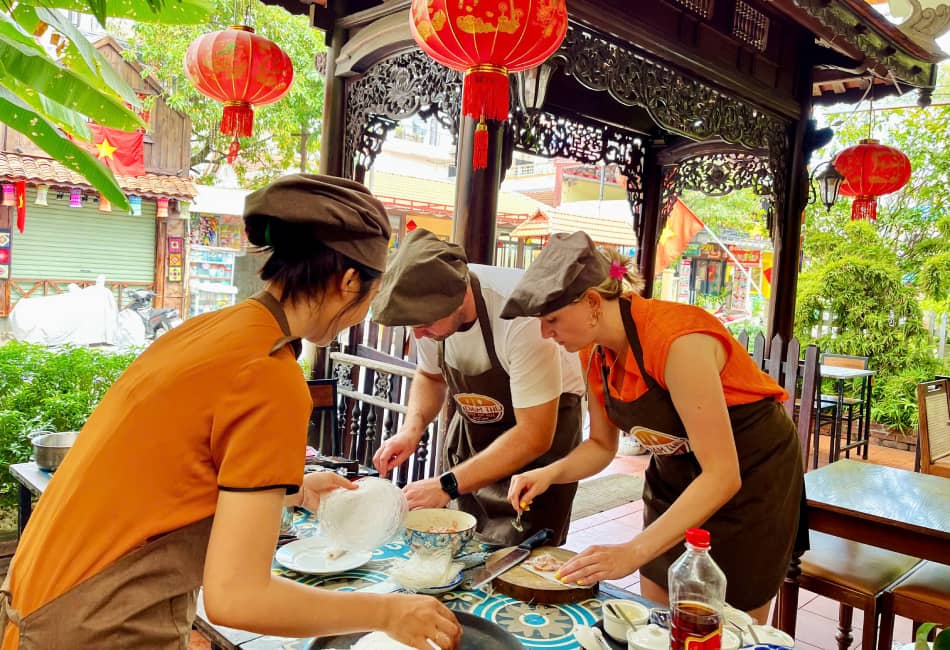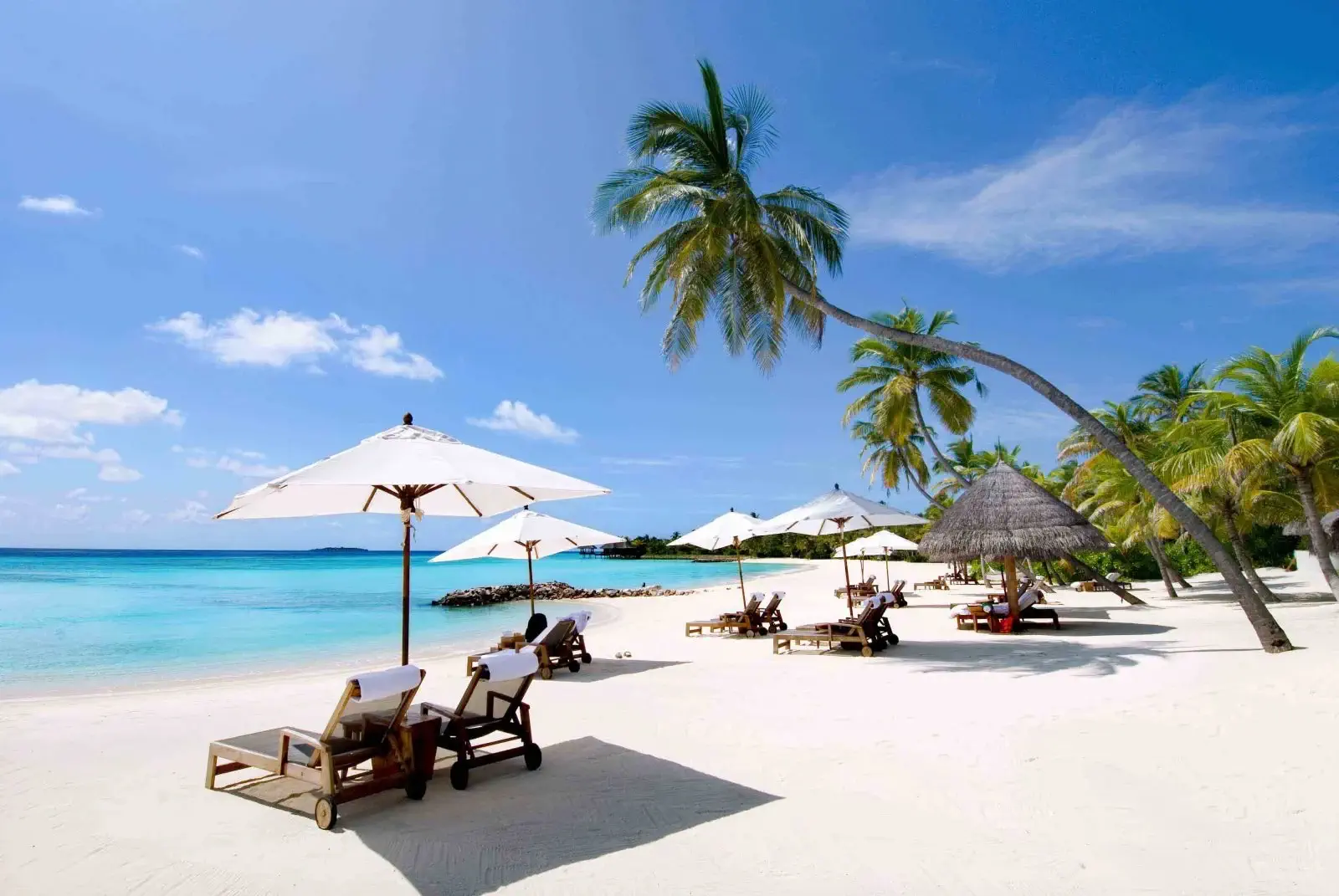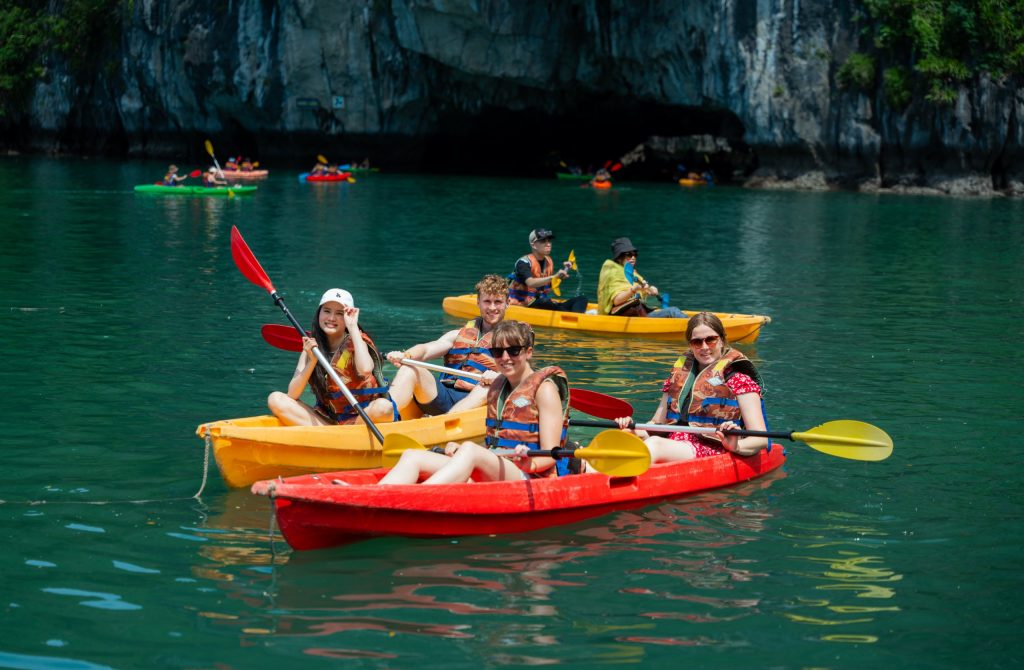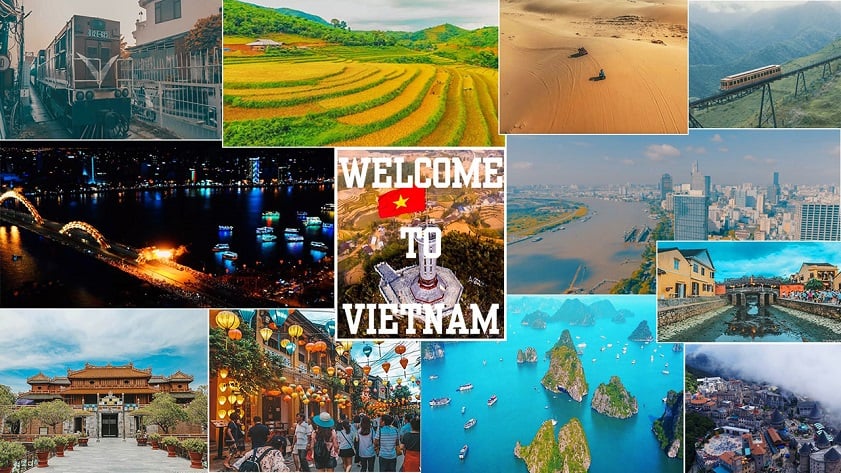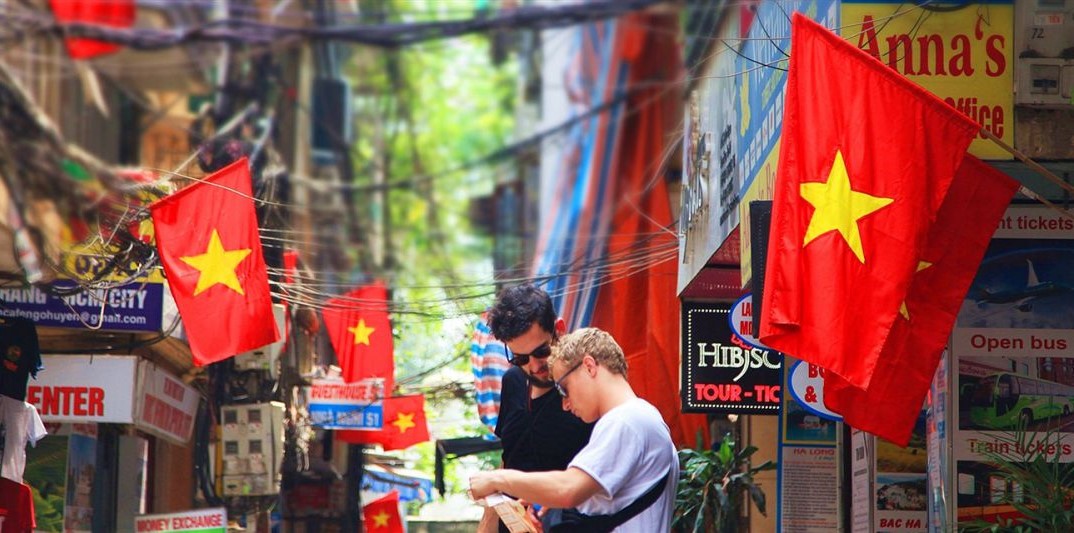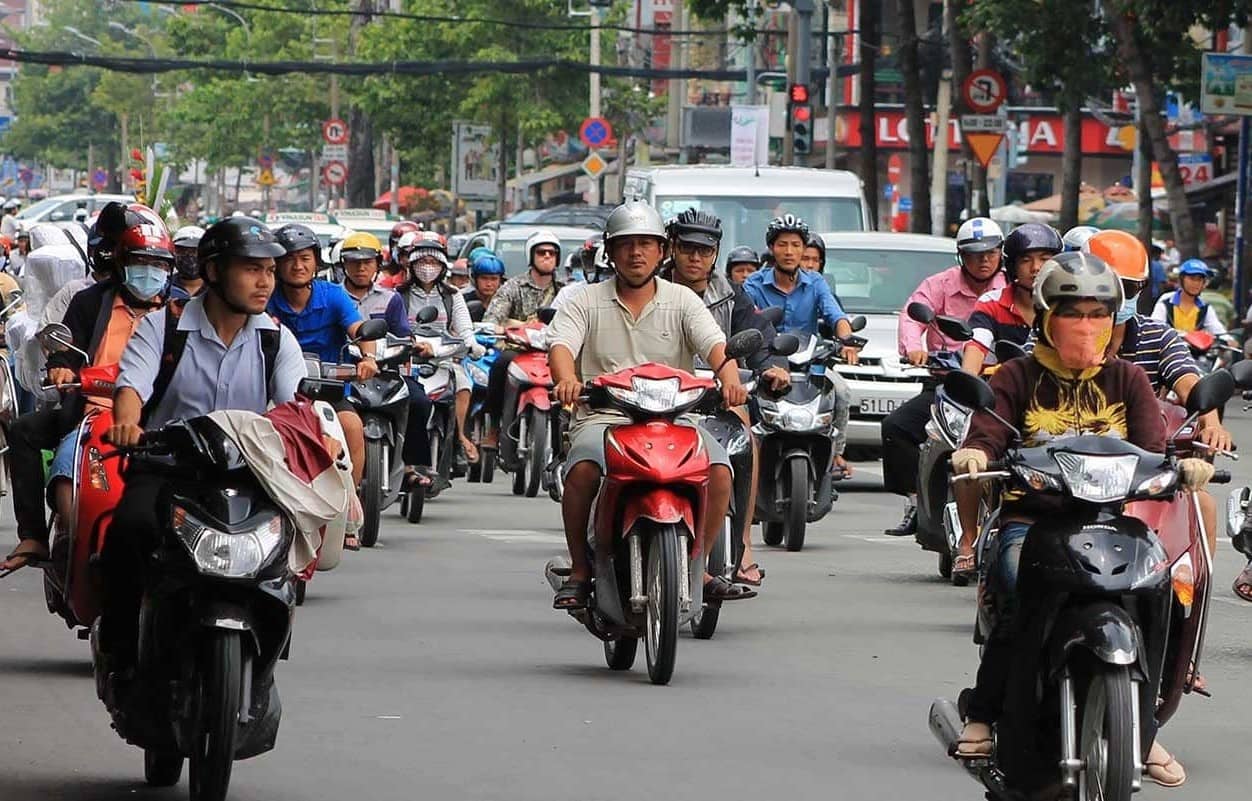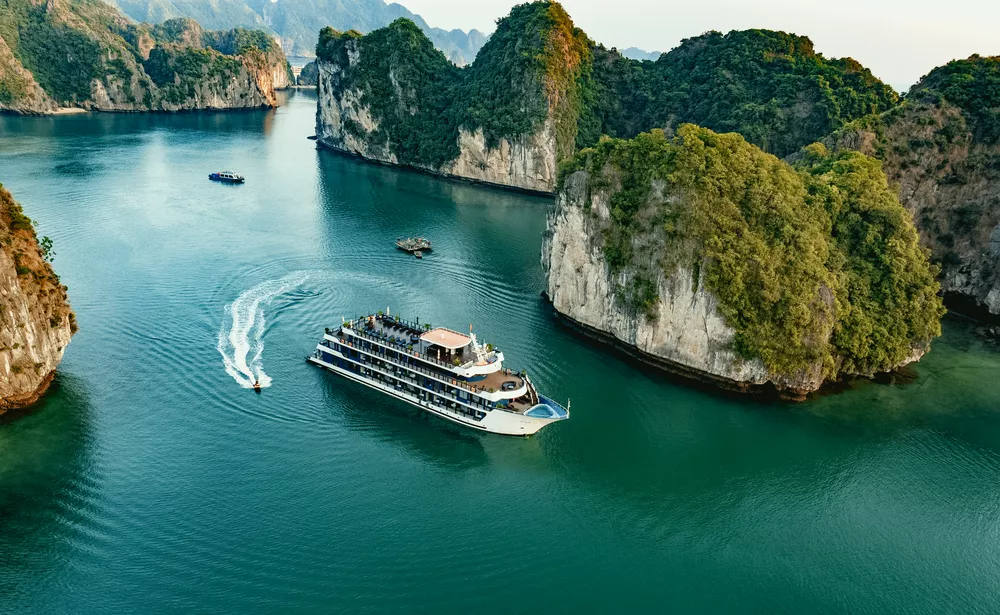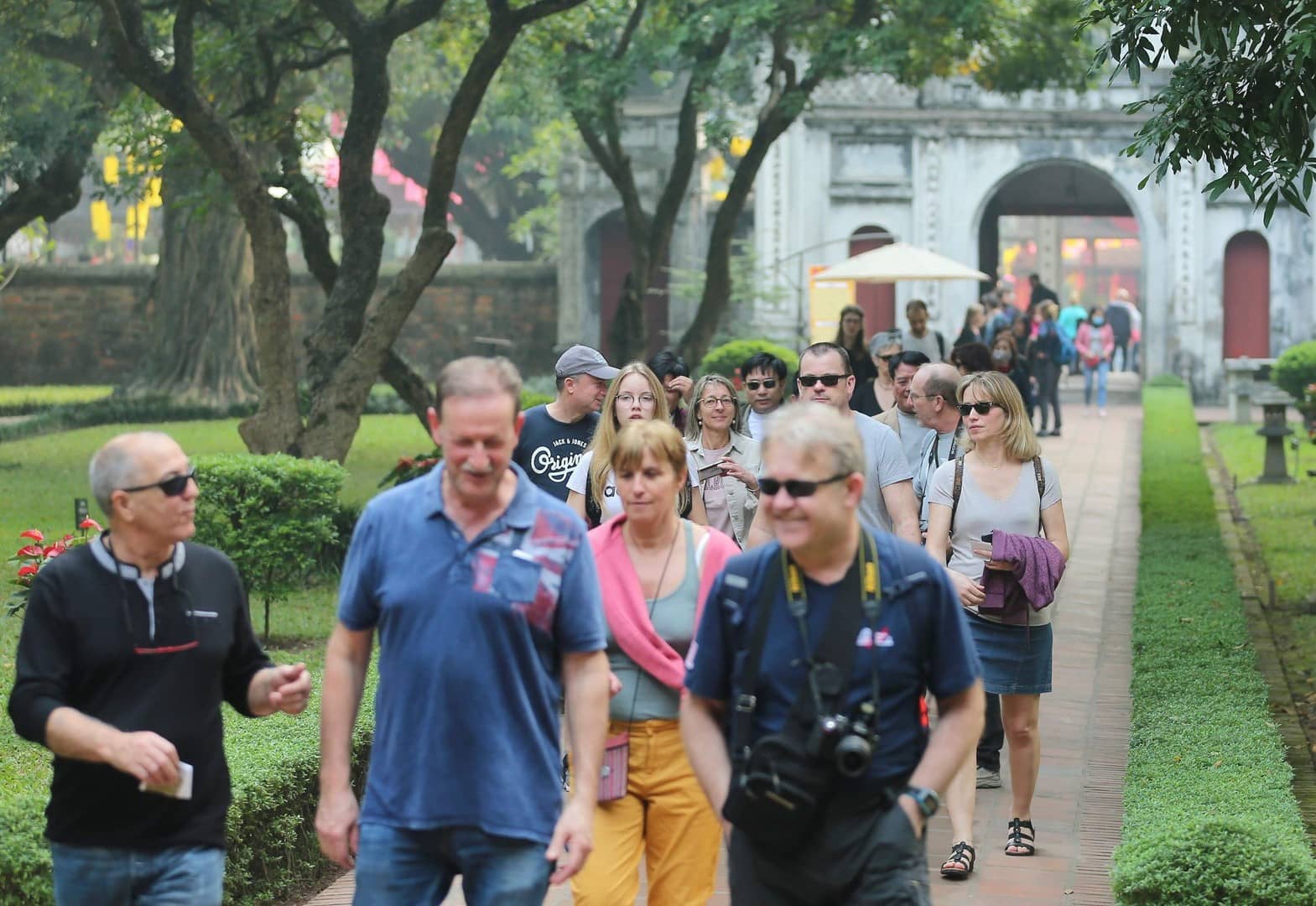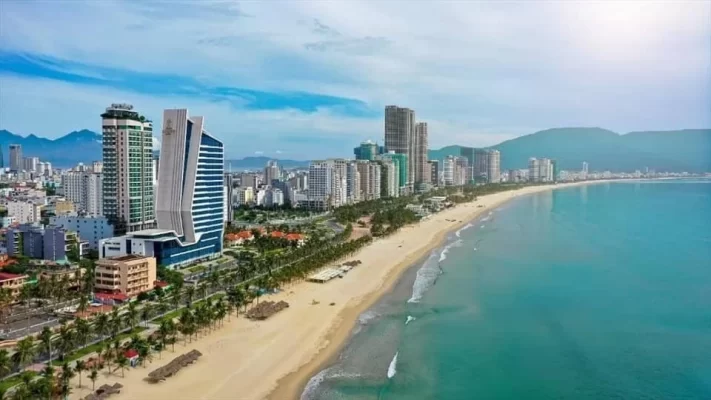
Let’s explore the most livable city in Vietnam!
Da Nang stands out as a prime spot for travelers, not only by its stunning landscapes, favorable climate, and hospitable locals, but also for its diverse array of natural wonders and delectable cuisine. If you’re contemplating a trip to Da Nang but are uncertain about its must-see attractions, mouthwatering dishes, and engaging activities, peruse this article for comprehensive insights!
I. Introduction to Da Nang
1. Overview of Da Nang
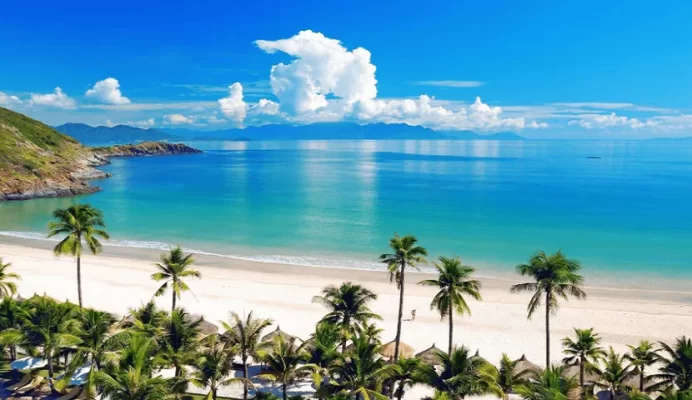
Da Nang Beach
Da Nang is a harmonious fusion of modern infrastructure and traditional Vietnamese charm. As one of the largest cities in Vietnam, it boasts a lively urban atmosphere that balances well with serene natural attractions.
The city’s location is ideal: it’s bordered by the turquoise waters of the East Sea, backed by scenic mountains, and conveniently situated between two UNESCO World Heritage Sites—Hoi An Ancient Town and the Imperial City of Hue. This prime location makes Da Nang an excellent base for travelers seeking adventure, relaxation, or cultural exploration.
2. Why Da Nang Appeals to International Travelers
For global tourists, Da Nang has become a must-visit destination due to its diverse array of attractions and welcoming atmosphere. Here are several reasons why it stands out:
- Private Beaches: Da Nang is home to some of Vietnam’s most famous beaches, such as My Khe Beach, often dubbed one of the world’s most beautiful beaches. With its soft sands, clear blue waters, and ample space, My Khe offers visitors a serene retreat as well as options for water sports like surfing and parasailing.
- Breathtaking Landscapes: Natural wonders like the Marble Mountains and the Son Tra Peninsula provide ample opportunities for hiking, exploration, and photography. The Marble Mountains, with their cave temples and panoramic views, are both spiritually and visually inspiring, while Son Tra Peninsula’s jungle-covered hills are home to rare wildlife, such as the endangered red-shanked douc langur.
- Cultural and Historical Significance: Da Nang is also rich in cultural heritage, highlighted by its Cham Museum, which showcases ancient artifacts from the Cham civilization, offering a glimpse into the region’s fascinating past. Additionally, landmarks like the iconic Dragon Bridge, which breathes fire and water on weekend nights, provide a modern twist to the city’s historical charm.
- Modern Amenities and Infrastructure: With its top-tier hotels, resorts, and excellent transport infrastructure—including an international airport—Da Nang is a convenient destination for travelers. The city’s welcoming ambiance, coupled with friendly locals and a reputation for safety, make it particularly appealing to international visitors.
3. Best Time to Visit Da Nang
The ideal time to explore Da Nang is during the dry season, which spans from February to August. This period offers warm, sunny weather and minimal rainfall, perfect for beach activities, sightseeing, and outdoor adventures. With average temperatures ranging from 25°C to 34°C (77°F to 93°F), these months provide an excellent climate for relaxation by the sea and exploration of Da Nang’s natural landscapes.
- February to May: The early dry season, with pleasant temperatures and lower humidity, is particularly favored by tourists. It’s a perfect time for outdoor activities and exploring the nearby cultural sites, with sunny days and clear skies.
- June to August: As temperatures peak, Da Nang becomes a lively beach destination for locals and tourists alike. Although it can be warmer, these months are ideal for enjoying the coast, with waters that are invitingly warm and calm.
II. How to Get to Da Nang
By Plane
Airplanes undoubtedly are the best convenience transportation for tourists exploring Da Nang due to their convenience and time efficiency. With numerous direct routes now available from major airports like Noi Bai and Tan Son Nhat, the journey has become remarkably streamlined, typically taking only 1.5 to 2 hours. Opting for air travel will likely be the preferred choice.
By Train
For those who cherish experiences and seek economical options, selecting the train for your journey to Da Nang is a must. One distinctive aspect of train travel is the chance to soak in the sights along the journey. Especially ideal for travelers who appreciate a slower pace of life, the train offers a perfect alternative to air travel.
By Passenger Bus
Another cost-effective transportation option for those journeying to Da Nang is the passenger bus. Opting for bus travel to Da Nang necessitates good health to endure long-distance seating. Unlike air or train travel, the bus station sits directly within the city center, ensuring convenient access to hotels upon arrival for travelers opting for this mode of transport.
III. Da Nang People
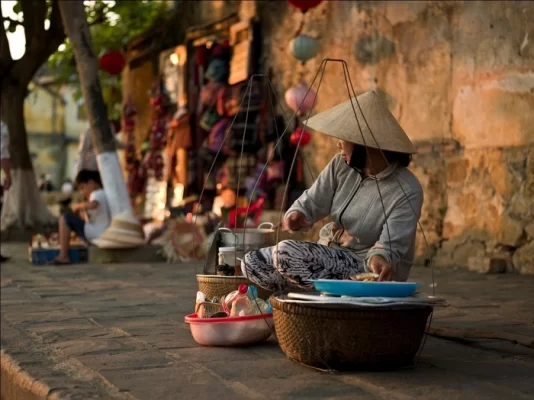
Da nang Local People
The exceptional characteristics of the locals can be condensed into three adjectives: Diligent – Welcoming – Gentle
Diligence defines their approach to life, characterized by a serene and unhurried demeanor. Amidst the hustle and bustle of urban living, the unique essence of the people of Da Thanh remains untouched. They diligently and calmly embrace the seaside breeze, the vibrant tapestry of landscapes, and the leisurely flow of the Han River coursing through their veins.
Being welcoming is an inherent trait among coastal residents. Upon arrival in Da Nang, you’ll receive a warm reception deserving of your visit. Waitstaff and restaurant proprietors greet you with smiles akin to unbreakable bonds. Whether it’s a friendly wave, heartfelt affirmations of “yes, yes,” or the endearing term “con” from elders, these gestures foster a sense of comforting familiarity and closeness.
How about Gentle? Their eagerness often overshadows their gains, perhaps leaving them vulnerable. Feeling lost? In Da Nang, there’s no need for concern; the locals are eager to assist, readily providing directions and ensuring safety. They exude warmth, amiability, and a hint of bashfulness, yet display remarkable enthusiasm when aiding esteemed visitors.
It’s possible that the local people are accustomed to welcoming tourists due to the frequent hosting of major international events like the International Fireworks Festival and the Vietnam Tourism Day celebration.
IV. Da Nang Culture
1. Typical festivals in Da Nang
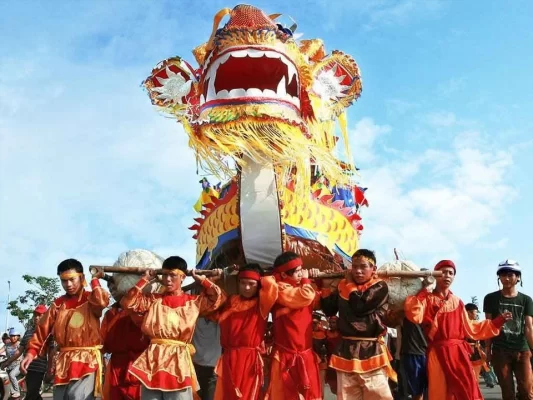
Da Nang Festivals
Da Nang is renowned for its unique and colorful festivals that reflect the rich cultural heritage and lively spirit of the local people. Among these, the Da Nang International Fireworks Festival (DIFF) stands out as one of the most spectacular events, attracting teams from around the world to compete in breathtaking fireworks displays. Held annually along the Han River, the festival features dazzling pyrotechnic shows, music performances, and cultural activities, creating an unforgettable experience for both locals and tourists.
Another prominent celebration is the Quan The Am Festival, held in the Marble Mountains. This spiritual festival honors the Buddhist deity and includes traditional ceremonies, folk games, and musical performances, offering a serene and culturally enriching experience. Additionally, the Cau Ngu Festival, which prays for a bountiful fishing season, showcases Da Nang’s deep-rooted maritime traditions through vibrant boat races and rituals.
Click here: Da Nang Culture
3. Culinary highlight

Da Nang Culinary Highlight
The culinary scene in Da Nang bears a significant influence from its neighboring Quang Nam province. During your journey through Da Nang’s gastronomic culture, you can indulge in a variety of dishes such as Quang Noodles, Cao Lau, Bun Mam, Bun Cha Ca at Con Market, as well as seafood delica
Learn more: Da Nang Cuisine- 10 Must-Try Dishes
V. Top Da Nang Attractions
What activities await you in Da Nang? Embark on a journey with Ula Travel to uncover the renowned attractions and must-visit destinations that you cannot afford to miss on your upcoming trip.
1. Ba Na Hills

Ba Na Hills
Ba Na Hills is a picturesque hill station and resort located near Da Nang. Perched at an elevation of about 1,487 meters (4,879 feet) above sea level, it offers stunning panoramic views of the surrounding mountains and lush greenery. Ba Na Hills is famous for its unique Golden Bridge, a pedestrian walkway supported by giant stone hands, which has become an iconic symbol of the region. The area features a blend of French colonial architecture, with charming buildings, flower gardens, and a replica French village that transports visitors back in time.
Additionally, Ba Na Hills is home to the longest non-stop single track cable car in the world, providing a breathtaking ride through the clouds. With a variety of attractions, including an amusement park, wax museum, and a range of restaurants and bars, Ba Na Hills is a must-visit destination for tourists seeking both adventure and relaxation in a surreal and beautiful setting.
Let’s EXPLORE CENTRAL VIETNAM 3D2N
2. The Golden Bridge
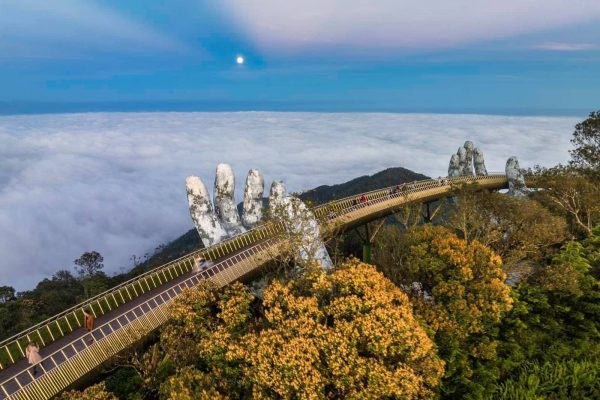
The golden bridge leads you to a fairyland
The Golden Bridge is a stunning architectural marvel located in the Ba Na Hills resort near Da Nang, Vietnam. Opened in June 2018, this pedestrian bridge is renowned for its unique design, featuring two giant stone hands seemingly lifting the walkway into the sky. The bridge spans 150 meters and stands 1,400 meters above sea level, offering breathtaking panoramic views of the surrounding lush green mountains and valleys.
Its golden-hued balustrades and elegant curves create a striking contrast against the natural landscape, making it a popular destination for tourists and photographers alike. The Golden Bridge not only serves as a functional passage but also as an iconic symbol of innovative design and Vietnam’s burgeoning tourism industry.
Do not miss: The Golden Bridge: Top 1 Must-Check-In Place in Danang
3. Son Tra peninsula
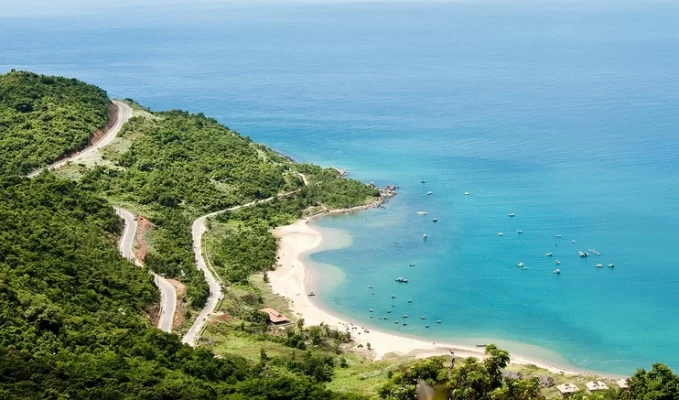
Son Tra peninsula
The Son Tra Peninsula is a breathtaking natural gem known for its lush greenery, pristine beaches, and diverse wildlife. Often referred to as the “green lung” of Da Nang, this peninsula spans over 4,000 hectares and rises to 693 meters above sea level, offering stunning panoramic views of the city and the East Sea. Home to the rare red-shanked douc langur, Son Tra is a haven for nature enthusiasts and photographers.
Visitors can explore the Son Tra Nature Reserve, enjoy the serene beauty of the Linh Ung Pagoda with its towering Lady Buddha statue, and relax on the idyllic beaches such as But Beach and Tien Sa Beach. The combination of natural beauty, rich biodiversity, and cultural landmarks makes Son Tra Peninsula a must-visit destination for travelers seeking tranquility and adventure alike.
Learn more about: Best beaches in Da Nang
4. Linh Ung Pagoda
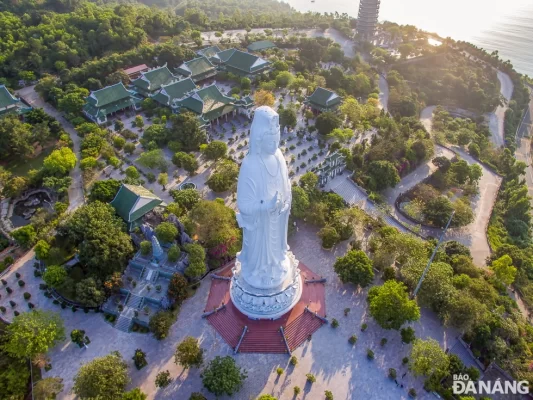
Linh Ung Pagoda
Linh Ung Pagoda, located in Da Nang, Vietnam, is one of the most significant and beautiful Buddhist sites in the region. Situated on the picturesque Son Tra Peninsula, the pagoda offers stunning panoramic views of the city and the South China Sea. It is renowned for its serene atmosphere and impressive architecture, featuring a blend of traditional and modern elements.
One of its most striking features is the towering 67-meter-high statue of the Goddess of Mercy (Guanyin), which is the tallest in Vietnam and can be seen from many parts of Da Nang. The pagoda complex includes various temples, gardens, and courtyards, providing a tranquil space for meditation and reflection. Linh Ung Pagoda is not only a place of worship but also a popular tourist attraction, drawing visitors with its spiritual significance and breathtaking natural beauty.
See more: Colors of Central Vietnam 4D3N
5. Marble Mountains
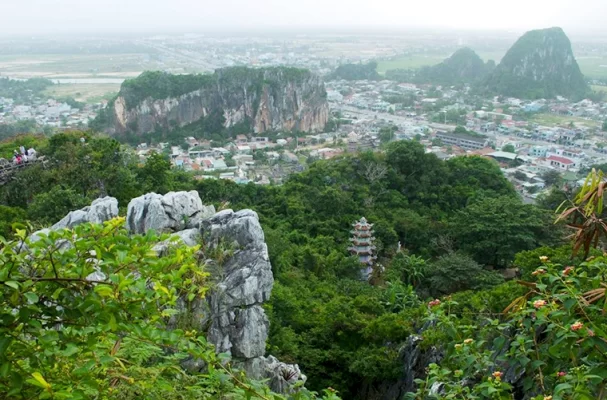
Marble Mountains
The Marble Mountains, known as “Ngu Hanh Son” in Vietnamese, are a cluster of five marble and limestone hills located in Da Nang, Vietnam. Each mountain is named after one of the five elements: Kim (Metal), Thuy (Water), Moc (Wood), Hoa (Fire), and Tho (Earth). These stunning formations are renowned for their intricate cave systems, tunnels, and numerous Buddhist sanctuaries.
Visitors can explore the many pagodas and shrines nestled within the mountains, offering a serene and spiritual atmosphere. The Marble Mountains also provide breathtaking panoramic views of the surrounding countryside and coastline, making them a popular destination for both tourists and pilgrims. Whether you’re interested in history, spirituality, or natural beauty, the Marble Mountains offer a rich and captivating experience.
6. Dragon Bridge
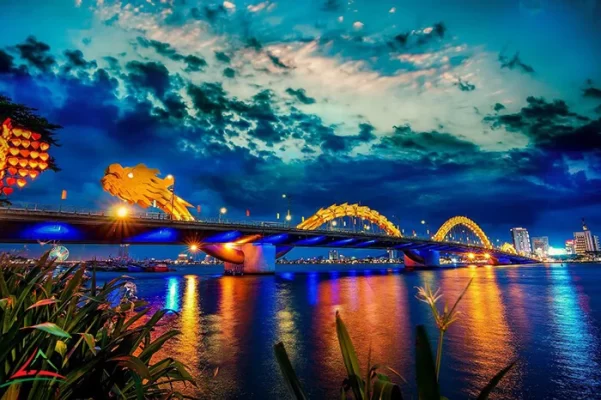
Dragon Bridge
The Dragon Bridge is a stunning example of modern engineering and a symbol of the city’s rapid development. Completed in 2013, the bridge spans the Han River and stretches 666 meters in length. What sets the Dragon Bridge apart is its unique design: it is shaped like a giant dragon, a creature deeply rooted in Vietnamese culture and mythology.
The bridge is not only a functional piece of infrastructure, facilitating easy transportation between the city center and the eastern regions, but also a major tourist attraction. Every weekend, the bridge dazzles visitors with a spectacular show where it breathes fire and water, illuminating the night sky. This combination of practical utility and cultural significance makes the Dragon Bridge a beloved landmark in Da Nang.
7. My Khe Beach
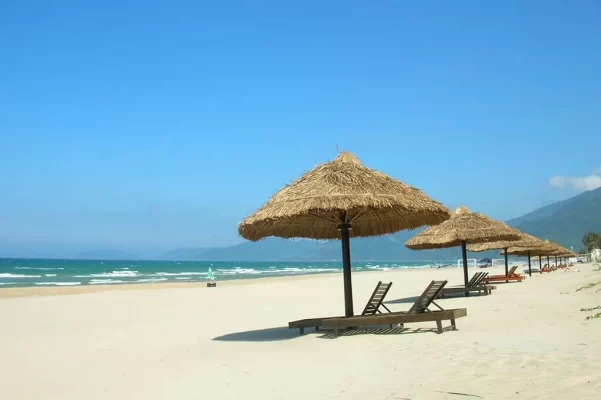
My Khe Beach
Often regarded as one of Vietnam’s most beautiful beaches, My Khe Beach stretches over 20 miles (approximately 32 kilometers) of coastline, featuring fine, white sand and clear blue waters that are ideal for swimming, sunbathing, and water sports.
My Khe’s soft, powdery sand and calm, warm waters make it a picture-perfect beach. With stunning views of the Son Tra Peninsula on one side and lush mountains in the distance, the beach is a visual treat at any time of the day, especially during sunrise and sunset when the sky is painted with spectacular colors.
8. Cham Museum
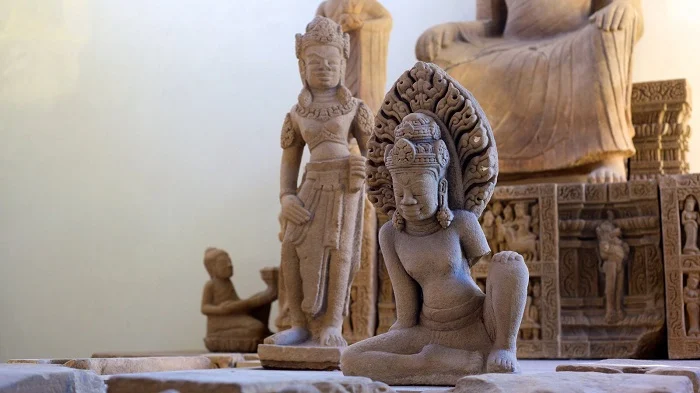
Cham Museum
The Cham Museum, also known as the Da Nang Museum of Cham Sculpture, is the largest museum dedicated to Cham culture in the world. Founded in 1915 by the French School of the Far East, it showcases an impressive collection of artifacts from the ancient Champa Kingdom, offering a unique perspective on a civilization that once thrived in central and southern Vietnam.
The museum holds over 300 original sculptures, mostly made of sandstone, terracotta, and bronze, dating from the 7th to the 15th centuries. The artifacts are organized into galleries based on their places of origin, such as My Son, Tra Kieu, and Dong Duong, allowing visitors to explore the diverse styles and religious influences across different Cham regions.
In conclusion, Da Nang is a destination that beautifully embodies the allure of Vietnam, where breathtaking landscapes meet rich cultural experiences, and modern comforts blend seamlessly with age-old traditions. Its golden beaches, welcoming locals, and proximity to historic sites make it a top choice for international travelers seeking a dynamic yet relaxing experience.
Whether you’re exploring ancient temples, indulging in Vietnamese cuisine, or simply enjoying the sun-soaked beaches, Da Nang promises an unforgettable journey that captures the spirit of Vietnam. A visit to this vibrant city is more than just a vacation; it’s an opportunity to connect deeply with Vietnam’s beauty, culture, and warmth. Put yourself for a varied and delightful adventure along the shores of Da Nang with Ula Travel!
See more: Da Nang travel tips



